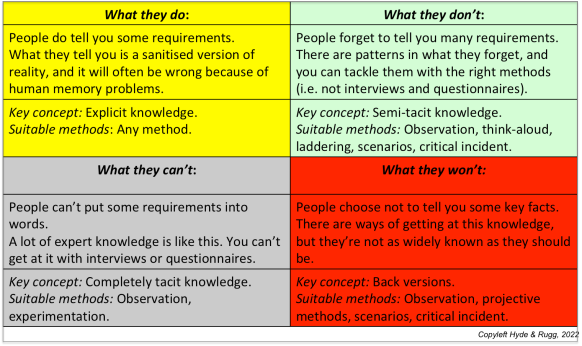By Gordon Rugg and Sue Gerrard
This is the second in a series of posts about explicit, semi-tacit and tacit knowledge.
It’s structured around a four way model of whether people do, don’t, can’t or won’t state the knowledge. If they do state it, it is explicit knowledge, and can be accessed via any method. If people don’t, can’t or won’t state the knowledge, then it is some form of semi-tacit or strictly tacit knowledge, which can only be accessed via a limited set of methods such as observation, laddering or think-aloud.
This is summed up in the image below.

The previous article in this series gave an overview. In the present article, we focus on do and don’t knowledge, i.e. explicit and semi-tacit knowledge.
Continue reading